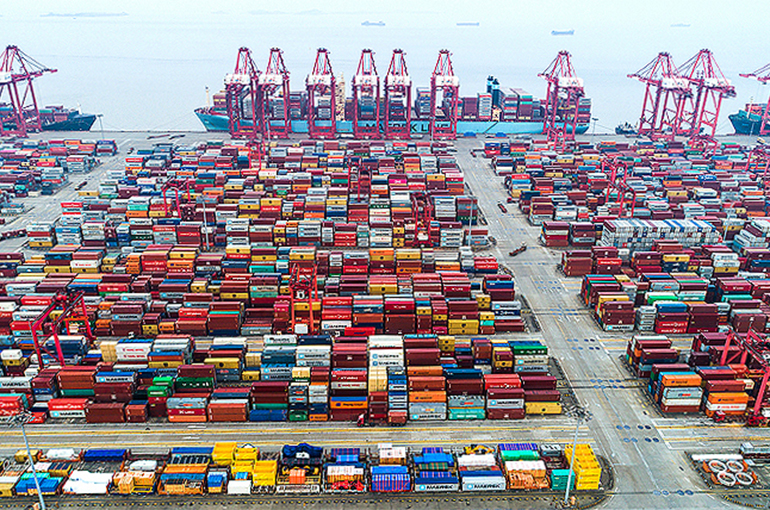 'China Overcapacity' Is a Narrative of Trade Protectionism
'China Overcapacity' Is a Narrative of Trade Protectionism(Yicai) May 20 -- The spreading narrative of 'China's overcapacity' is linked to discourses of the 'China threat' and decoupling supply chains, reflecting European and North American nations’ intensifying trade protectionism.
European and North American countries' narrative of excess capacity in China mainly targets new energy products, especially electric vehicles, lithium batteries, and photovoltaic equipment. They accuse China of overcapacity, claiming output exceeds domestic and global demand, which would hurt the growth of local businesses and labor markets. However, such statements ignore the complexity of overcapacity and the role that China plays in the global economy.
Considering supply and demand, Chinese manufacturers' capacity utilization rate is around 76 percent, close to American peers' corresponding rate of 77.3 percent. Such ratios for leading EV makers such as Changan Automobile and Li Auto top 90 percent. That of market leader BYD even reaches as high as 159.5 percent, signaling overtime. The capacity utilization of leading domestic makers of lithium batteries and PV modules exceeds 70 percent, higher than the global average of 40 percent.
From the perspective of demand, China's EV sales reached nearly 7.8 million units last year, up 36 percent from the previous year. In the first four months of this year, such sales jumped by 34 percent to 2.5 million units from a year ago. The penetration rate of EVs is 31.6 percent and such cars make up 6 percent of all vehicles on the streets, which means that the sector boasts bright prospects.
Against the backdrop of globalization, both supply and demand are becoming international. As long as production satisfies domestic demand, the remaining products can naturally be exported to other markets. Companies can gain market share abroad by engaging in fair competition through cross-border trading.
Last year, China exported almost 1.8 million EVs, an annual increase of 67 percent. From January to April, 421,000 more EVs were exported, presenting a 21 percent boost from a year ago. However, the average NEV penetration rate in developed nations is just 16 percent. The global demand for EVS is to tally 45 million units by 2030 so there is huge room for growth, according to calculations by the International Energy Agency.
Contrary to the profit pressures that overcapacity would assume, the average profit margin in China’s EV sector increased last year. BYD raked in CNY30 billion (USD4.1 billion) in net profit.
When it comes to subsidies, both the US and the European Union have offered financial subsidies to their EV sectors, similar to the moves of the Chinese government. Through the Inflation Reduction Act, the US government has granted about USD369 billion worth of tax incentives and subsidies to clean-energy sectors, including EV firms. Europe also gives subsidies ranging from EUR3,000 to EUR6,000 (USD3,262 to 6,523) to each EV buyer. However, China's EV subsidies have declined since 2014 and were phased out in 2022 whereas those of Europe and the US are even rising.
At the same time, Chinese manufacturers are not dumping as prices of their EVs tend to be higher abroad. Moreover, exports account for one-eighth of domestic output whereas sales in Europe and North America make up only 13 percent of the total. Chinese EV exports equal just 8 percent of the European market, which makes the so-called "impacts" on European and North American markets hard to justify.
The author is an economics professor and a director at the Chinese Association of Market Development.
Editor: Emmi Laine